– Welcome, everyone, to Wednesday Nite @ the Lab. I’m Tom Zinnen. I work here at the UW-Madison Biotechnology Center. I also work for UW-Extension Cooperative Extension, and on behalf of those folks and our other co-organizers, Wisconsin Public Television, Wisconsin Public Radio, the Wisconsin Alumni Association, and the UW-Madison Science Alliance, thanks again for coming to Wednesday Nite @ the Lab. We do this every Wednesday night, 50 times a year. Tonight it’s my pleasure to introduce to you Josh Mezrich. He’s with the Department of Surgery here at UW-Madison. He was born in Princeton, New Jersey. He went to Princeton Day School for high school, and then he went to Princeton University and studied Russian. Then he went and got his MD degree at Cornell University Medical College in New York City, then went to the University of Chicago for a residency, back to Boston at Mass General for a research fellowship, back to the University of Chicago to finish up his residency, and then he came here in 2005 for a transplant fellowship and then went on the staff at the hospital and the faculty here at the School of Medicine and Public Health in 2007. Tonight he gets to talk with us about the kidney, which is the second most important part of my body, the bladder being the first. [laughing] Thank you. If you can fix that, let me know.
– We can’t transplant it but–
– Darn it. Pretty cool thing tonight. We get to talk about kidney transplants and kidney transplants from live donors. So the topic for Josh’s talk is: Can Everybody be a Hero: The Beauty of the Paired Kidney Exchange. Please join me in welcoming Josh Mezrich to Wednesday Nite @ the Lab. [applauding]
– Great. Thank you so much. Can you guys hear me? Great. It’s great to be here. And I was going to talk about the evolution of the chicken, but, luckily, I decided not to. And Tom has actually volunteered to donate his kidney on stage. [laughing] So those in the front row, you may want to– [laughing] No, I’m just kidding. So I know my talk was about paired exchange, but I’m actually going to use you guys to help me in a way and talk about a little bit more than that. And I think it’s going to be a lot of fun and very interesting. And we will go over paired exchange, but we don’t necessarily need a whole hour for that or 50 minutes for that. So I think transplant surgery is really incredibly amazing, and I think it’s amazing for a number of reasons. But one of the reasons is that in the ’40s nobody thought transplant could ever happen. In the ’50s, just a few crazy people thought it was possible. By the ’60s, those crazy people were actually having successes. And by ’83, with the approval of Cyclosporine, transplant became a field with really good outcomes and has only gotten better.
So when you think about it, it’s a really short period of time. I’ve been fascinated by this for a long time, and somewhere in 2011 I read the book Emperor of All Maladies. Now, perhaps some of you read that wonderful book by Siddhartha Mukherjee, a book about the history of cancer, mostly the, well, cancer. He had recently graduated from an oncology fellowship, and he used his patients’ stories to then jump back and tell the history of cancer. And he’s a beautiful writer. He won a Pulitzer Prize and has gone on to write other books, The Gene. He writes for The New Yorker. But I was reading that book and it was a real epiphany for me. I said I’m going to do this for transplant because I think the story of transplant is so amazing and a lot of the pioneers are still alive or at least when I started thinking about it. Some of them have died in the last few years. And I started thinking about how I would do this.
And I decided I would write a book that described both my coming of age as a surgeon and the stories of my patients, donors and recipients, and try and tell the story of transplant. And in that, I would travel around to all the pioneers and spend time with them to try and make the, understand how amazing it was what they did and to use me, a mere mortal, to show how hard it was what they did against all odds. And I spent three or four years working on this, was able to get an agent and sell it, and actually just had it, it’s just accepted by HarperCollins. It’s finished. Although I don’t have a pub date yet. So I thought I would start talking about it now so that you’ll all buy it. [laughing] That’s not really true, but it’s been sort of my passion, along with my surgery and my basic science, and I’m very excited to talk about it. One of the things that I think is amazing about transplant is our donors. Our donors are our heroes.
Without donors there would be no transplant. Donors are living and deceased, and we’re going to talk about both today. And I had my very first exposure to what I like to call taking from death, or seeing what death can provide to the living, in my second year of med school when I started working for the skin bank. It was called the New York Firefighters Skin Bank. And I was a medical student but I had this as a side job, and we would drive around to hospitals all around the tri-state area where patients were organ donors. And then after the procurement of the organs, we would then harvest the skin. And we would take the skin for burn victims to be used as temporary coverage until enough coverage from their own body could be used. And I was young at this point. I didn’t really understand what it was I was getting into.
I didn’t really understand why that skin couldn’t stay on the recipient or how this had any connection to transplant other than sometimes when we would go for the procurement, the solid organ teams, as we call them, would be there and I would get to scrub in with them. And I thought, how amazing is it that all around the country there are people that are going to sleep and are going to wake up with this person’s organs in them? That was fascinating to me. But I would say I was pretty immature about it. I was more focused on the technical task of doing it. My real awakening for transplant happened during my third year of medical school, and it was actually my first day on my surgery rotation and I was pretty scared. I remember it vividly. They started around four in the morning, and that’s how surgeons, especially young trainees, start. And we got down by 6:30 in the morning to present all the patients to the residents, and then they had me scrub in, take cases, and I was in cases all day. Around the end of the day I was told, “Oh, by the way, you’re on call tonight.” So that was the beginning of my next 20 years of my life where I realize my time wasn’t worth that much.
But it was still amazing. And then around 10:00 PM I scrubbed on a bowel obstruction, and I remember I was starting to feel kind of sick. I was too afraid to eat. I hadn’t drank anything all day. I was very dehydrated. The case ended around one in the morning, and I thought maybe I could go get a drink and go take a nap and my resident said, “Go next door and scrub on this kidney transplant.” And I didn’t want to do that at all, I really didn’t want to. But I went in there and I remember it like it was yesterday. Dr. Stubenbord, who’s a transplant surgeon back then, was doing the kidney and he had the classical music playing and he took out the kidney and I was cutting sutures, either too long or too short, which is the standard for medical students, and I’ll never forget when he reperfused the kidney, and shortly after he did that this happened, this urine. And this is one of our kidneys squirting out on the table.
And I remember just being amazed. Like we just took an organ from someone who had just died, didn’t know this recipient at all, and now it’s making urine, and this guy is going to get off dialysis. And I was hooked then. I remember thinking this is so amazing. I don’t understand how this can work. Like, this shouldn’t work. How did they figure this out? I also was really curious, like, can I do this? I always was very intrigued by the challenge of it. The technical demands. You know, the idea of training for years and trying to pick up this skill and not knowing if you’d be able to do it.
So I really was intrigued by that. And it never left me. And still, to this day, as much as I complain about having to get up in the middle of the night, when I sew a kidney in and it squirts urine or a liver in and bile starts coming out, I don’t do hearts but when you see a heart plug in and it starts beating, you have to look and say, this is just too cool, I can’t believe this works. Well, the history, let’s talk about the history a little bit. I’ll keep an eye on the time so we get to the present as well. The first successful kidney transplant was December 23rd of 1954 at Peter Bent Brigham Hospital, later to be known as Brigham and Women’s Hospital, by a man named Joe Murray, a guy who I got to spend some time with. He died a few years back. He performed that surgery, and he ultimately won the Nobel Prize. I believe it was 2012.
He’s a very modest, humble person, or he was. He said, “It wasn’t really me, it was all the people around me.” But while that was an important moment in 1954 because it showed the world you could successfully transplant an organ and have it work, it wasn’t really, it didn’t prove that much because immunologically it wasn’t important at all. It was a kidney between two identical twins. Two brothers, one of whom developed Bright’s disease is what they used to call it. One of the glomerulonephritis or the autoimmune kidney diseases that young people would develop. And at the time there was very little option of dialysis. So basically it was a death sentence. And Joe Murray performed that surgery. But a lot went on before that.
And one of the cool things about transplant is that one of the fathers of transplant is a basic scientist by the name of Peter Medawar. Peter Medawar is like an amazing guy. He’s a Brit. He’s very proper. He was very charismatic, gave wonderful speeches. I never, he died long before I got a chance to meet him. But I never understood why is Peter Medawar the father of transplant because he wasn’t a surgeon, he didn’t do transplants. What he was famous for was the concept of tolerance. Now, what is tolerance? I thought tolerance was that you can drink a bunch and you can handle your liquor. [laughing] And that is true but that’s not the tolerance he was talking about.
So, again, the first transplants were actually done much earlier than that. And there’s some medieval examples of transplants, but they didn’t work at all. Then in the early 1900s there was a guy named Alexis Carrel. Some of you may have heard of him. He actually was the guy who figured out how to sew two blood vessels together. It’s hard for me to think that surgery ever existed without that. But back in the early 1900s, they didn’t have a good reason to do bypasses. They didn’t know anything about atherosclerosis. The only real causes of things like aneurysms back then was syphilis and those patients would likely die.
You know, people, they didn’t do heart bypasses and all these kinds of things. But Alexis Carrel figured out how to do that, and he published it and he still has a Carrel patch, which we use all the time, named after him. But after he figured out how to do that, he started transplanting everything. He transplanted every organ you can think of between animals. He didn’t operate on humans at all except very early in his career. He transplanted thyroids and legs onto dogs and kidneys and hearts and he didn’t do livers though. And he was able to do them technically because he was a technical genius, but they all rejected within a week. They worked at first and then they rejected. And he won a Nobel Prize in 1912.
And in his speech he said, you know, the details of transplant have been worked out, but there’s some force that will prevent it from ever succeeding. He had a hunch that it involved genetics. They didn’t know the concept of the genetics. But they were closely related, he had a hunch it could last longer. He had a hunch that you could do some conditioning, either to the donor or the recipient, and make it last longer. But then when World War I broke out, he went to France, he was French, got involved in the war, came back, kind of got off kilter after that. He worked at Rockefeller. He was a big eugenicist, as a lot of leaders back then were. Ended up in Vichy France, was supported by the Nazis a little bit towards the end of his career.
Was really good friends with Lindbergh and ultimately got very discredited. So transplant was lost until Medawar came around. And at that point they knew about this force. They didn’t really know what rejection was. Medawar got interested in the concept of that because he got called in when a pilot crashed in the blitz and had a really bad burn. And who do they call? They called Peter Medawar. He’s actually a zoologist, but he was doing some research on skin. So he went and started, tried to do some skin grafts on this patient. They didn’t last.
But he analyzed them under microscopes. He saw the influx of cells. He’s like, what are these cells? He tried second set grafts. These were grafts not from the patient, from cadavers. And so they would reject. He did second set, he found they rejected faster. He started getting interested. Why is this happening? He did grafts from the same person, they lasted. That patient ended up dying, but then he got really into it and he started really writing a ton about rejection, identifying what the cells were, identifying second set, so that was very important.
He was at a cocktail party in the late ’40s, all good science happens at cocktail parties, I think. [laughing] Another investigator came up to him and said, “Listen, I’m studying.” I’m using cows or cattle to try and study genetic versus environment, and the problem is when I get a litter of cattle or calves. Some of you probably know more about cows than I do, we’re in Wisconsin. But when I get a litter I can’t tell which ones are identical and which aren’t until they grow up a little bit and it’s screwing up my research. And Medawar said, “Oh, that’s easy, just transplant skin grafts between them, and if they’re accepted, they’re identical and if they’re not identical, they’ll surely reject.” And he was like, “Okay, can you do them for me?” And Medawar didn’t want to do it but he’s like fine. So he goes out and does it, and lo and behold all of them are accepted, all of them. And even between the male and female calves, so clearly they weren’t identical. And he was like, how can this be? Like a real scientist, unlike myself, an amateur scientist where sometimes the desire is to make the data fit the hypothesis, which is never good, Medawar made the hypothesis fit the data; he had some great quotes. One of his quotes is, and he said it much better in his British accent, he said, “The level or your desire for something to be correct has no bearing on whether it is correct.” [laughing] Which is totally true.
But he realized something was wrong. He went back to the literature and he came across an article from the ’40s by Ray Owen. Maybe some of you guys know of him. Ray Owen was here at the time. He was in the Department of Agriculture. He ultimately made his way out to Cal Tech. But he’s certainly one of the very famous graduates of University of Wisconsin where he got his PhD. And Ray Owen, some years before that, had gotten a letter. He was running a lab that did various things with cattle, but he got a letter from someone in the northeast who had a cow that got impregnated, and when she had the litter, it was clear that there were two different fathers.
It had the markings of two different types of cattle. And Ray Owen was like, how can that be, send me some blood. When he analyzed the blood, he found that these calves had the blood types, two different blood types. They were chimeric. They had the blood types of the father and the mother. And he was like, how can that be? Well, what they did know was that calves, unlike humans, they share a placenta. So the blood, in most of them, so the blood mixes. And because they’re in this fetal state, they don’t reject it. They become chimeric.
They’re tolerant. And he recognized that. He focused more on the blood cells and the red cells than the white cells because no one knew anything about white cells really. But he said these animals are chimeric. In fact, in Ray Owen’s article, he continued on and wrote: “This could have some bearing in transplant.” But the editors of Science cut that out. They were like, that’s science fiction. And they still published his article. See, that’s why I won’t send my stuff to Science. [laughing] And they would never read my stuff either. But anyway, that was what Ray Owen wrote.
So Medawar ran across this article, he read it, and he was like, that’s it. And, more importantly, these animals are tolerant. They can accept skin grafts because they have cells, you know, of each other floating around in them. So that was the first example of where transplants were successful from non-identical pairs. And Medawar ran with that. He started studying that in multiple different models. And he ultimately was able to publish in around ’53 in Nature. Better than Science, I don’t know. That when he injected fetal mice with non-matched donor cells, then after the mice were born he could then transplant skin into those mice and they would be accepted. And he called that tolerance.
And transplant tolerance is considered the holy grail of transplant. We don’t really try to do transplant tolerance except in some protocols. We do have some successful protocols both in large animals and even in man in pretty well-matched people where we’re able to withdraw immunosuppression and they accept the organs. But the vast majority of patients who get a transplant, unless they have an identical twin donor, need to take immunosuppression. So I always thought, well, that’s cool that Medawar did that, but we don’t even do transplant tolerance, so why is he the father of transplant? But what I realized is before Medawar wrote that and spoke beautifully about it and inspired a generation of people about it and continued the science on and on, everyone thought there was no chance. Transplant was a pipe dream. It’ll never work except for some crazy fools. And Medawar brought this authenticity, this love of science to our fields and I think rightfully deserves to be the father. And thankfully he got to live through– He was president of all our early societies and got to live through so many successes in transplant and see what he was studying actually come to reality.
So that, I think, must have been incredibly satisfying for him. He was an inspiration to Joe Murray and to all of the others. So after Joe Murray did this transplant in ’54, he was like this is great but this isn’t going to be our answer. So he and others started working very carefully on different protocols to bring it to non-identical twins. And they moved very quickly, and it wasn’t just Murray. There were quite a few other people involved. One guy worth mentioning is Sir Roy Calne, who was a direct student of Medawar, made his way over from England and worked with Murray. And he was the first person who figured out that first 6-MP, the chemotherapeutic agent, and then ultimately Azathioprine could help with prolonging transplantation. And then, down in the ’80s, he was the one who tried Cyclosporine.
He didn’t discover it, of course. It was actually discovered by someone– The drug company had a policy that when people did trips they should collect the soil and then they would test the soil for fungal properties, and someone went to Norway and ended up finding Cyclosporine and ultimately made its way into the transplant clinic. And in 1983, that changed everything. That’s when transplant went from this experimental treatment to a valid option and has just gotten better and better. Now, one other thing I want to add before I get into the living donor thing, I think we’re moving along at a good pace. The thing about transplant that I think is really different than other areas of medicine. In other areas of medicine we spend our time trying to fight off death. We’re trained, possibly not correctly, in medical school and through residency that we got to keep battling, we got to keep fighting, we got to try and cure disease. And obviously that’s important.
I think, thankfully, over the last few years we’re starting to think more about death is inevitable for everybody, and maybe part of our job is to make that death better, to make people have better deaths. And I think there’s some amazing people writing about that. Atul Gawande and others. But nevertheless, we still look at death as the enemy and we’re always fighting it. Transplant is the one field where we, in a way, start with death. We need someone to die to get our organs, at least our deceased donor organs. And I truly believe that the donors and their family are my patients as well. I really believe that, and it’s very important to me. The first time I went on an organ procurement when I was here, I’d been on some others but where I was actually really involved in the process, we fly out in these little planes which is not always that awesome. [laughing] I’m sure some of you have had that experience.
I think flying is fine, but when the weather’s bad you realize how insignificant you are. But nevertheless, you fly out, usually in the middle of the night. You go to this hospital, wherever it may be, and I remember being really nervous, thinking like, how is the family going to think about me? I’m this vulture coming to take the parts from their loved one who just died unexpectedly. What am I going. They’re going to always remember me as that guy. That was my fear. And I thought maybe I can just avoid the family entirely. We went to the hospital, and the coordinator who had been on many, many procurements said let’s go talk to the family. And I was like, all right, I’ll go.
And it was incredibly beautiful. We went in and there were like 15 people in the room. They were all crying and with each other. And when we came in, the room lit up and they wanted to know everything about it. This was their legacy. Their loved one being a hero, making some sense out of this otherwise horrible moment. Their loved one was going to save five, six, seven, eight people. They wanted to know about the process. They wanted to know about the recipients, although we don’t tell them specific details, of course, at first because of protecting the recipient.
But they were fascinated by the idea this was all going to go on right then. They didn’t want us to leave. And we asked them a lot about the donor. And it was beautiful in a way. And then when we start our procurements, we always do a time out at the beginning and will say something about the donor, often something the family told us, maybe a poem, maybe a story, maybe something they loved to do, their favorite song, their favorite book. And it gives us all this incredible drive and passion to do a good job. And then the interesting thing about surgery is once an operation starts, it truly becomes a puzzle or a task. You no longer think about the fact that this is a person or was just a person, that this is someone who has someone who loves them or what you know about the person. And I think that about all the surgeries I do.
Each surgery is a puzzle. Some puzzles have a hundred pieces, some puzzles have a thousand pieces, some have a lot more than that. But you have to solve that puzzle and you can’t– You actually push those emotions out, and you rarely think about it. Every now and then it’ll come into my mind if something goes wrong and we’re getting into trouble, or if I happen to turn my head and see like their hand undraped. For some reason the hands are very human. I think everyone thinks that. But for the most part when you’re in there working, you’re not sitting there thinking about, “Oh my God, this is someone’s dad or someone’s brother or someone’s wife.” Those aren’t thoughts that we typically have. Transplant played a huge role in defining what death was. It seems like you should know what death is, but I bet a lot of you have different opinions about that.
So there’s dead dead, right? I mean, you’re dead. That means, probably to most of you guys that means you have no heartbeat, you have no blood pressure, you have no respirations, you’re cold, you’re dead. And that is what death was. But that definition was a real problem for transplant. In the ’50s, it didn’t really matter because so few transplants were being done. A lot of them from living donors. Mostly people who were getting some other operation and the kidney was coming out. There were some operations back then, I won’t get into, where the kidney was removed, was still a functioning kidney. Some were people who died on the table getting heart surgery because more than 50% of those patients died on the table.
And they didn’t have bypass back then, and can you imagine how difficult that was? And those kidneys could be pulled for transplant. So that was dead, but very recently dead. But as the ’60s went on and transplant started to improve, there was concern about how are we going to get enough organs. As people started thinking about heart transplant, it became quite clear they would need to have some other definition of death because people knew from animal experiments and common sense that a corpse was likely not going to be a good donor for a heart. And as that got closer and closer to reality and became a reality in 1967 by Christiaan Barnard, South African, it’s all covered in the book. Okay, the heart stuff is fascinating, but I’m not going to get into it. You can bring me back for that. It became clear that they needed better definition of death. That sounds strange, doesn’t it? And a little conflicted, but nevertheless it’s true.
There were other problems. There were people that were sitting in ICUs that were clearly feudal that were being taken care of because they didn’t know when to stop. And that needed to be addressed as well. So in the late ’60s, at Harvard of course because everything happens at Harvard, they had a conference on this concept, and Joe Murray was there. Joe Murray, the most famous transplant surgeon in the world by far. And it was run by this anesthesiologist with the name of Wheeler, a very famous anesthesiologist, an ethicist who basically wrote the book on informed consent, randomized trials. He was famous and infamous because he called out a lot of researchers for not doing informed consent, for being biased. He was brilliant, though. And Joe Murray and Wheeler got together and they said we need to codify death.
There’s a lot of controversy about this because the concept that a transplant surgeon played a central role has led some ethicists to question if that was appropriate. It’s funny, so there’s a lot that got cut from my book which I think are the funniest stories. I’m bummed about that. But in one short line Wheeler wrote a letter to the dean of Harvard, whose name was Ebert, last name was Ebert, and he said, I want to have this conference, I want to get this group together and write up what death is. And Ebert wrote back and said, I think that’s a great idea. And then I wrote in parentheses, I guess you could call that two thumbs up. [laughing] And my editor cut that line. [laughing] A lot of the humor got cut, but we’ll do a joke night another time. I actually love comedy but I’m not getting into it today.
Anyway, so they got together and they started working like crazy. They had a few ethicists, neurologists on the panel. You know, all the people you would want on there. But mostly the article was written by Wheeler and Murray. They worked together every day. Murray wrote a good portion of it. Murray didn’t, Murray wanted not to use the term brain death. He wanted to just call it death because he said it’s confusing. And what they came up with was, this concept was out there already and had been written about.
France had a definition called coma dpass, which was essentially what we call brain death, where the patient won’t take any respirations. They still can have a heartbeat, but they have no responses, they have no cranial nerve function. All the things that we would say now would be called brain death. The thing we’d probably add now is we typically do a study to show no blood flow to the brain. But you could identify that from clinical exam from the cranial nerve exam, and back then they had to do that because they didn’t have the imaging we had. And so they basically came up with the exact definition of brain death we use now, that when you pull the patient off the ventilator they wouldn’t take a breath. Again, no cranial nerves, no responses, no overbreathing the vent. And they called that brain death. Now, it’s a little confusing because is that dead? I’d always assumed brain death is death.
I mean, you can’t recover from it. You don’t have any brain function. Certainly no one would want to live that way. So to me I was comfortable calling it death. And I guess I have to feel that way because I go out and take organs out of people while their hearts are still beating. There are a lot of ethicists that argue, in fact the majority say that’s not true. I mean, you guys made that up. They agree that you should be able to take organs from someone who’s brain dead, I mean everyone, never everyone, but almost every ethicist would agree with that. But they say it’s not death, it’s different than death.
You made that term up. Some people don’t agree that it’s death. There are some cases out there and some of you guys have heard about them where family members loss someone. There’s one case with a young girl who unfortunately died after a tonsillectomy in sort of a freak complication, clearly became brain dead. No one questions that diagnosis. But to the family, she’s still alive. To them, she still gives them value. They feel like she still responds to them, and they’re like, she’s not dead. Her heart’s beating.
She feels warm when I touch her. She still gives us value. She’s still our little girl. You can’t laugh at that. I mean, that’s their opinion, and that’s fine. The courts backed up the fact that they could have disconnected this girl. This was out in California. But they decided not to do that. You can imagine the PR of that.
And, in fact, she was transferred to a long-term care facility where she still lives now. I don’t know. She’s still brain dead. And there are lawsuits that are moving their way up the courts and likely will make it up to the Supreme Court to question this definition of brain death. That could be a real problem for not just transplant but also for ICU management and end of life. I’m very comfortable with the idea of taking organs from brain dead people, but when the definition was first made, that was not immediately accepted. There was a lot of controversy, both in the American public, or I should say internationally, and also in the transplant community. And it didn’t help that the heart transplant guys in the typical fashion of the heart surgeons, the second Christiaan Barnard did one transplant, everyone started doing heart transplants. No one knew anything about immunology and all the recipients were dying like dogs.
And people started thinking you guys are stealing hearts from living people and took about 10 years for people to accept the concept of brain death. It’s accepted now but you’ll find a lot of articles questioning whether it’s really death. I don’t know if it’s death or not. I guess it doesn’t ultimately matter to me. It’s certainly not life, that’s how I look at it. But you could say there are other conditions that aren’t life that clearly you wouldn’t define as death. We could have hours of talk about this. But the reason I bring it up is that our donors are either dead or alive. Let’s move on to talk about live donors so we can actually spend a few minutes on what I said I would talk about.
Why do we do live donors? Well, a couple reasons. One, we don’t have enough deceased donors. I mean, that’s one. But even if we did, the outcomes for kidneys are significantly better with a live donor than a deceased donor. That’s inarguably. Everybody knows that. There are a lot of reasons for that. Well, they’re by definition healthy. They didn’t just die.
They’ve been carefully evaluated. They don’t have diseases, or at least minimal level of disease. We’ve deemed them good candidates. They didn’t go through the process of brain death or whatever happened before we take the organs out, low blood pressure and traumatic episodes and these infections, whatever else went on. And we’re able to take them out and put them right in. And that helps too. We know the longer time they’re outside the body, the slower they are to kick in, and that does have an effect on outcome. Living donors are, for kidney, are better than brain donors. I like to tell people the average half-life of a living donor kidney, the data’s not perfect, but nevertheless is roughly 15 years and for a deceased donor kidney it’s like eight to 10 years.
Now, the perfect deceased donor kidney from the 20-year-old gunshot wound to the head, sadly that’s our perfect donor, may rival the imperfect living donor kidney. But just in terms of the data, it’s quite clear. The donors, is there risk to the donor? Of course there is. We had two kidneys for some reason, I guess. And surgery is surgery. The risks are low. So we evaluate donors very, very carefully. We try to avoid diseases. They need to be healthy.
We try to avoid things like high blood pressure. Diabetes certainly we wouldn’t do. Cancer would be out. Heart disease would be out. But then there are other things that we struggle with. What if they have a little obesity? What if they were a smoker? What if they had a kidney stone? What if they had a kidney infection? What if, you know, you name it. It becomes tricky. We know a lot about risks but not everything. We know that the kidney donor does have an increased risk of renal failure, but their risk only goes up to one in a hundred over their lifetime. That’s pretty good. Actually, for the longest time we thought there was no increased risk of renal failure because that’s actually below the risk of the general population.
But finally one of our good researchers, Dory Saga, figured out that you can’t compare the healthiest people to the general population. So he was able to identify a control group of people who could have donated that didn’t and certainly showed that we increase their risk like two- to five-fold of kidney failure, but to a very low number, one in a hundred. People were freaked out when he showed that. To me, I was like of course, nothing’s for free in life but in medicine for sure. And I had always told donors, I’m not going to tell you there’s no risk to this, but donors get that. They always, have always said of course there’s some risk. Part of what makes it so amazing, you give this incredible gift, you save someone’s life, you make their life so much better. You say to them, you’re sick. One of the things I think about illness, serious illness, is it’s so isolating.
When you’re sick, really sick, like dying sick, you’re separated from your family and your loved ones. You’re not enjoying kind of the milestones and hallmarks that make life worth living. You’re thinking about the fact that you’re not going to see your kids get married, or graduate, whatever it is they’re doing or hit those things. And even though your family may be with you, in the end you’re the one suffering. You’re the one sitting there in the gown with your butt exposed and getting taken to tests and not eating and worrying. And what I think the donors do is they say, let me be sick with you. Let me take a little risk with you. Let’s be sick together, and I’m going to make you better. And I think it’s one of the most heroic things I can imagine.
But part of that heroism is it’s not zero risk. It’s low risk, but it’s going to be painful and it’s going to be a struggle and you’re going to get through it and you’re going to say to me, it’s the best thing I’ve ever done. That’s my hope, but it’s not zero risk and it never was and it never will be. It’s a little bit like I’m going to be the guy who runs into the burning building and pulls out the kid. If you’re that guy or that girl, you can be a donor. And I think it’s wonderful. I have so many great stories of donors. Now, let’s just talk about the operation. We do the operation laparoscopically, which means through small incisions. These are little.
I hope you guys don’t mind, I have some pictures that I think are beautiful and you may think are gross, but these are ports that we poke in there and our instruments go through those ports. That’s kind of the standard operation. Those are the ports. And then we remove the kidney through a small Pfannenstiel bikini cut incision down low. We actually put a bag in there, staple off the artery, the vein, scoop the kidney in the bag, pull the drawstring, and hand it off like a fish, and close him back up. It’s pretty amazing. But even more amazing, I do some of these through the belly button where that’s the whole incision. Believe it or not, you untuck the belly button. That looks, I hope, incredibly tiny. And we shove in this thing that shoves through that little incision, allows three ports to work right through this tiny little opening.
You can picture, it’s tricky because your instruments can cross and your brain can go nuts. [laughing] But you get really good at controlling that. And here’s a couple of examples of people that I took kidneys out of. That was right after surgery. And that was a little bit later. You cannot even see it. The only thing was he was hairless before the surgery. [laughing] No, I’m just kidding. I should have done it the other way and said this was the before and this was the after. [laughing] But so anyway, it just shows you. But regardless of how small the incision is, it doesn’t change the risk, it doesn’t change the recovery.
So I think living donors are the best. I think thinking about managing risk is very interesting. I think how paternalistic should we be. Whose choice should it be, is a tricky question. One of my favorite stories, a guy came. He was in his 50s. He was overweight. He had a little bit of hypertension. He was a smoker. He had those thick hands, this thick belly.
You could tell that he had some risk of developing diabetes or something, heart disease, kidney disease down the road, and he was like, “Doc, I’ve been rejected at two centers. I want to give my wife a kidney. Let me explain this. Our family doesn’t work without my wife. She does everything.” I felt like he was talking about me in a way. He’s like, you know, she’s like the rock of our family. She’s way more important than I am. You know, we still got our kids, you got to let me save my wife. He’s like, I’ll sign anything you want, I won’t sue you. I’m not really worried about that.
But what I worry about is do you understand the risk you’re taking? Do I understand the risk you’re taking? Because each time we add something on, we don’t know what that number goes to. We can make a prediction, but we don’t know for sure. Does that matter? Is it my choice? I don’t know. If a father said or mother said, I want to give my kid, my little kid my heart, while I might be able to understand that as a parent, obviously we would never do that. So there’s clearly some level of risk that we would just say no way in hell. But for this guy, I thought, you know what, he gets it. He has insight and I’m going to let him do it. I had to get him through the committee, but we were able to do that. His surgery was really difficult.
He was a really big guy. But everything went fine. And he saw me in clinic about two months later, and he gave me this big bear hug and he was like, I will never forget what you let me do for my family. And as I wrote in the book, I said he’s wrong about one thing, he’s the one who did something for his family, not me. But I just remember shaking his hand, that thick hand, and just knowing it was a hand that had worked so hard to provide for his family and he just was going to continue doing that. If he develops kidney failure down the road, was that a mistake? I guess I don’t think so. My hope is that he’ll take care of himself. I always tell patients, if you donate and stop smoking, you’re probably healthier than if you don’t donate and keep smoking. But the likelihood is that they donate and keep smoking.
[laughing] Okay, now, can everybody donate? What if you want to give me a kidney? Can you donate to me? Well, I don’t know. First of all, we need to be a compatible blood type. That means if you’re an O donor, you can give to anybody. If you’re an A donor, you can give to an A or an AB. If you’re a B donor, you can give to an B and an AB. And if you’re an AB donor, you can only take. I’ve always wondered if that matched with personality, but I don’t think that’s been studied. There are other scenarios where people can’t donate. So we could be both Os and you’re going to give me a kidney, but if I have antibodies in my body, it’s possible I have antibodies to proteins on your cells.
That wasn’t a problem in early transplant, but the most common reasons to get antibodies– we call that getting sensitized– is previous transplant. That’s the number one most common. Previous blood transfusion and previous pregnancy. The most problems we have are certainly with retransplants. And we do a lot of retransplants. So we could be the same blood type but our cross-match still doesn’t work. We’ve gotten really good at identifying antibodies. We use flow-based beads that have all the different proteins represented, and we mix them with serum and we’re able to identify antibodies binding. We’re quite sensitive at that, but we’re really terrible at getting rid of them.
So we can avoid rather than do it. This idea, though, of limiting donation was a problem for a long time. And then Alvin Roth, some of you may have heard of him. He’s a game theory guy. He won a Nobel Prize in 2012. He was highly involved in designing the residency match system. He didn’t actually design the first version but he improved it. He also came up with a mathematical theory of doing paired exchange. It’s not that complex, but he did a lot of the programming.
This was around 2000. It starts out really simply, a two-way exchange. So if I have a donor, say I’m recipient two, I have my donor who’s blood type B and I’m an A. They can’t give to me. But if I can find someone else that is blood type B that has a donor that’s A, we can do a swap. And that’s quite simple. That should be easy to do. It doesn’t just have to be two-way. It can be expanded to three-way and beyond, but you can imagine how it gets mathematically more complicated.
The other challenging piece is in order to find people that can do this, you need a pretty big N. You need a lot of people and you need people that are willing. Likely, you need people that can’t receive from their own donor, at least at first, because probably they’ll just move forward with that donation. If my donor is an O, should I let someone else get that so I can help them, or would I rather have my loved one give me a kidney? I don’t know. So the early paired exchanges were all incompatibles, meaning everyone couldn’t get a kidney from their donor. It seems so simple and it should have worked. And the first one they did was in 2000 in New England because that’s where Alvin Roth was. At Harvard of course. But then he moved to Stanford.
But it worked and it got written up but it just never got traction. There were all these groups that formed. The Midwest Consortium, the Northeast, But it didn’t work, it didn’t work for a lot of reasons. One, people, it was too new. Number two, there was always this fear that if the kidney was outside the body for too long, maybe that would be a problem for the kidney. So if we were a few different programs, like, say we did it with Michigan, we would make their donor fly here to donate. To transplant surgeons, we’re like yeah, why not? They want to donate, they should just come here, we’ll do a good job. But it turns out most people don’t want to fly somewhere they don’t know to have some surgeon they don’t know operate on them in some town where they don’t know anybody, particularly while their loved one is getting an operation back home. That was a nonstarter.
I mean, you’re already asking so much from donors. Most people don’t want to have surgery where they don’t live unless it’s like a trauma. Never got traction. But people kept studying, kept thinking, and the idea came up, what if we just fly the kidneys? What if we take out the kidney and fly it? And, you know, we do deceased donors that are out of the body 24, 36, 48 hours. We know that they’re slower to kick in, but, you know, can we do that? And people started doing it, started showing good outcomes, and started building up. And then something called the National Kidney Registry came about. That’s an organization in New York run by a guy named Garrett Hill. Garrett Hill had wanted to donate. He was a marine and then a businessman.
Very successful. Very heroic character. And he wanted to donate his daughter a kidney but they were not the right blood type. And his businesses had involved computing and problem-solving. He was able to get a family member to donate his daughter a kidney, but he quit his job and focused his researchers and his programmers, and they got help from Alvin Roth actually, on figuring out how to make paired exchange work with a real business model. And it took them time, but they built it up and they built it up and they’ve just done like their 2,000th paired exchange. And we’re a part of it. And I just want to show you without going all this data. This was the one we were a part of.
You might have seen this in the New York Times. This was a chain. So if you can think about this. I told you about the pairs. And those ultimately have to be an even number of people and everyone’s got to donate and receive. In a chain of humanitarian donors, someone who comes and says I want to donate a kidney, I want to save someone’s life, I don’t even need to know who it is, they can donate to someone that has an incompatible pair, and then that donor donates to someone and that donor donates to someone. They don’t, they can crisscross the country until it breaks. Early in paired exchange, the thought was all the surgeries have to go at once because if someone backs out, you can’t force them to go to surgery. So if my intended recipient gets an operation on a Monday and then my turn to donate is on a Tuesday and I say, you know what, I’m not going to do it, they can’t make me do it.
Right? I mean– But NKR was like, you know what, I don’t think people are going to do that. And if they do that, we’re so big now that we’ll get another humanitarian donor to donate to that person. We’ll make good on it. And it’s worked. And it’s almost never happened that someone’s pulled out. What could happen, someone could get sick. But then usually you can delay and get it regoing. The NKR has gotten so good and so big that they have all these things they can do. If a kidney gets injured or something happens in flight, they pull in another donor and restart it.
They started a program where, say I have a kid who has kidney disease but isn’t going to need a kidney for probably 15 years, I can donate now and get a little token and it’s as if they had a living donor whenever they need a kidney. And I can actually name up to six people and all those people can get tokens. And they’ll end a chain on them in the future. I can also say I’m a teacher, I got to donate during the summer, my recipient’s not ready to go. I can do advanced donation now, I recover. Or maybe we’re a married couple, we have kids, let me donate, recover, then you can donate. They can accommodate all of that. It’s just incredible. It is just incredible.
So now I do tell patients for this long-term thing, it’s kind of like a timeshare. If the company goes down, there’s no, the NKR doesn’t like it when I say that. [laughing] What it really means is anyone can be a hero. Anyone can donate if you’re healthy. I think it’s just absolutely incredible. It’s, of all the surgeries I do, it’s the thing I feel most excited about, most nervous about, most passionate about. I’m not going to tell you the story of WB, one of the most incredible people I’ve ever met with ALS, but I think I had included the link, but if not, I wrote an Atlantic article about him. He was an ALS donor who wanted to donate either before he got too sick or at the end of life. And it’s an article I’m very proud about because of Wayne. I can give you the link if you don’t have it.
But if you go onto Atlantic and Google me, you’ll pull up about a million things about my brother, who’s a famous writer. But, eventually you can get to me. And then just a few pictures I was going to end. Here’s what a kidney looks like when you take it out. If anyone’s going to get grossed out, this is going to be the time. And that’s the ureter going down there. Here’s a kidney sewn in. You can see how nice and pink it is. Here’s another picture.
Normally we don’t enter the abdomen to do a kidney, but this was one of the rare scenarios where we have to take their kidneys out, so you can see a little bit of liver and some bowels. This is a kidney I did many years ago. It was three arteries. A little bit complex. I hooked these two up there and that one. It’s a lot of like sewing, and it’s a puzzle. I’m telling you it’s like a puzzle. Here’s a rare scenario where I put two kidneys into a recipient. Sometimes if one kidney is not going to be quite enough because of the status and the donor, we’ll put both in.
This is a polycystic kidney. You may have heard of polycystic kidney disease. It’s an autosomal dominate genetic disease where if you have the gene, you have polycystic kidneys. They can be like this big, and people will be walking around with two of them and won’t even have any symptoms. If they have bad symptoms, we’ll take them out. I had one guy, they were so big that we had to give him scrubs to wear home because his pants were falling off of him after surgery. So if any of you feel like you’re overweight, maybe you have polycystic kidneys. [laughing] No, it’s pretty rare. You would know if it was in your family.
Here is cirrhotic liver. It doesn’t look good. Here’s the liver out. Here’s the fresh, beautiful liver that I then put in. Amazing. I didn’t talk about Tom Starzl and liver transplant. Another talk. Here’s a pediatric liver. Sad that this picture was ever taken, but such a beautiful organ.
And here’s the famous picture of the kidney squirting urine on the table. Awesome. And my kids. [laughing] In the Frozen Tundra a couple years ago but I still love it. All right, guys, I hope you enjoyed it, and I’d love to come back later when the book ever comes out or talk about other things. [applauding]
Search University Place Episodes
Related Stories from PBS Wisconsin's Blog

Donate to sign up. Activate and sign in to Passport. It's that easy to help PBS Wisconsin serve your community through media that educates, inspires, and entertains.
Make your membership gift today
Only for new users: Activate Passport using your code or email address
Already a member?
Look up my account
Need some help? Go to FAQ or visit PBS Passport Help
Need help accessing PBS Wisconsin anywhere?
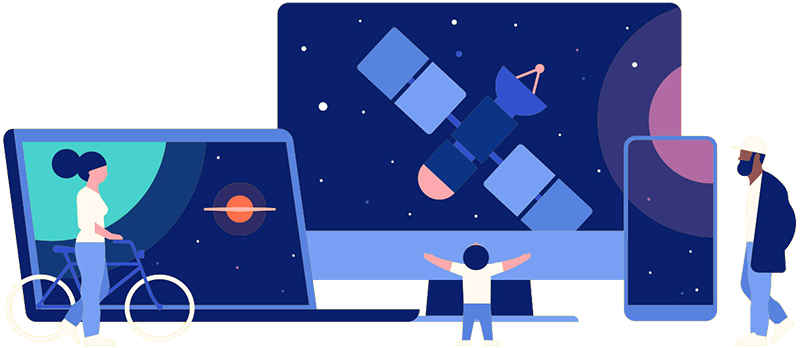
Online Access | Platform & Device Access | Cable or Satellite Access | Over-The-Air Access
Visit Access Guide
Need help accessing PBS Wisconsin anywhere?

Visit Our
Live TV Access Guide
Online AccessPlatform & Device Access
Cable or Satellite Access
Over-The-Air Access
Visit Access Guide
 Passport
Passport

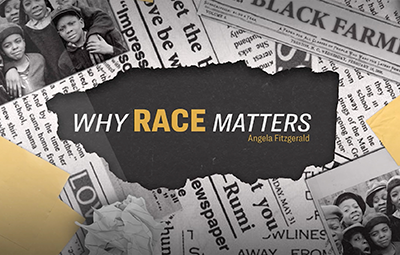

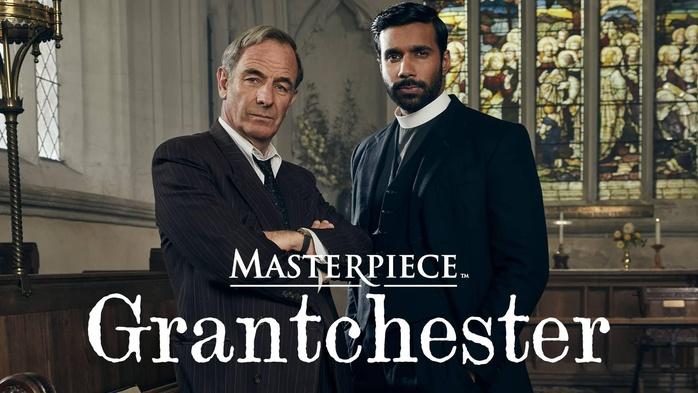



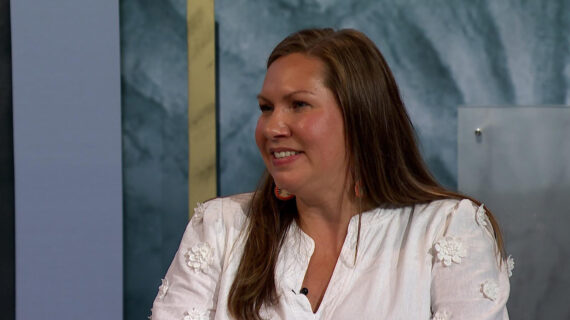
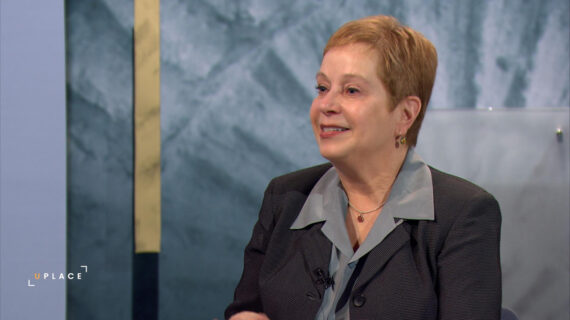

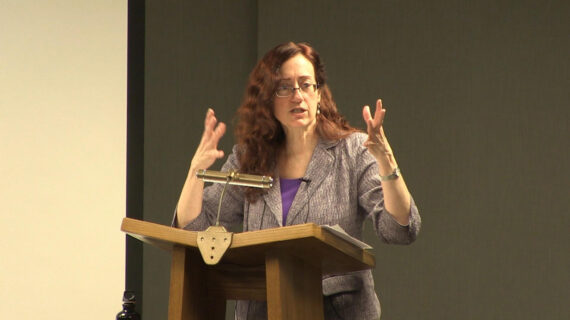
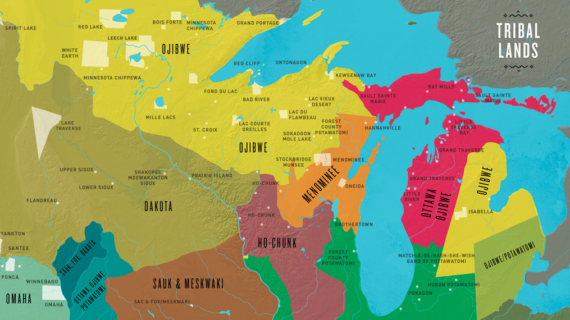
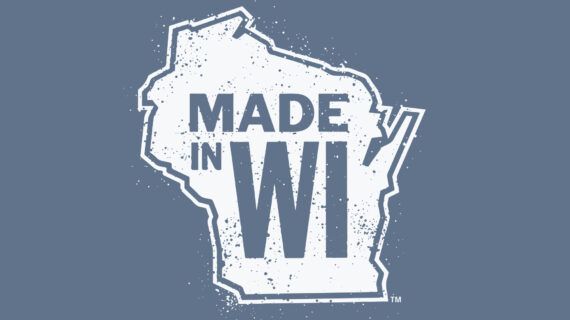

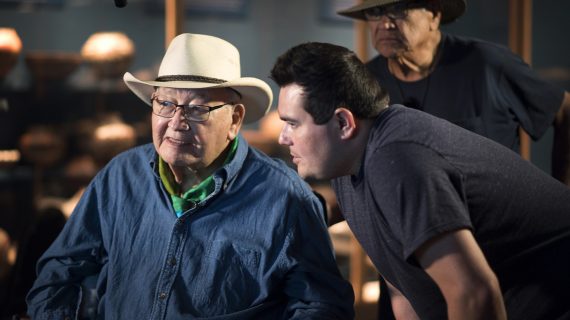

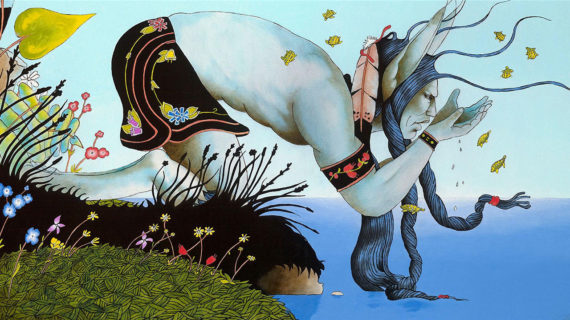

Follow Us